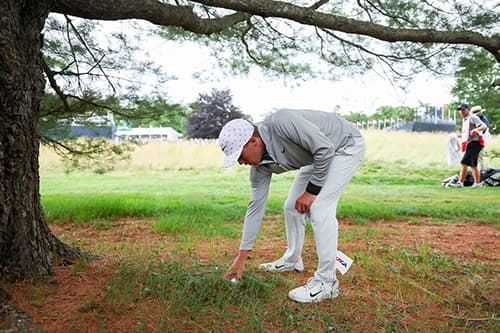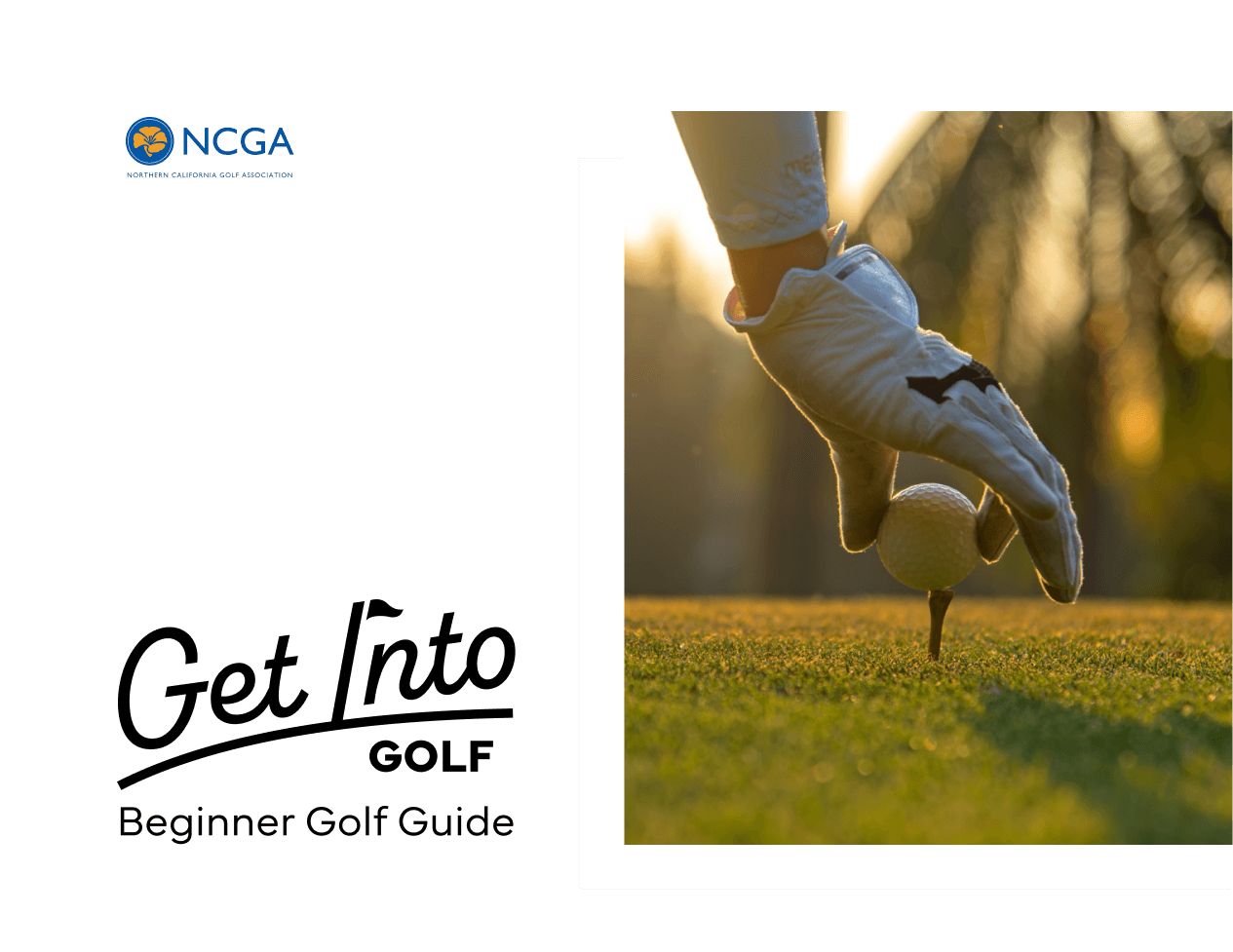3 Rules of Golf You Might Have Forgotten (& How They Help Your Game)
March 7, 2024 / by Emily Van Buskirk

“A player in competition is responsible for knowing and following the Rules of Golf.”
The USGA said that and I know what you’re thinking - define competition right? Obviously if you are playing in a tournament of some sort, the Rules of Golf matter more than ever. But even if you are just out golfing with your friends, your family or god forbid your significant other (just kidding 😂), knowing and following the Rules is just as important to keep things level (and civil).
You know we at the NCGA love rules but with 25 of them to keep track of, it's conceivable a few might slip through the cracks. Luckily our Director of Junior Golf Haley Whitbeck is also an in-house Rules expert. We teamed up with her recently to remind you of a few rules you might have forgotten and how they can have a positive effect on your game.
What you may not know about the Stroke and Distance Relief Rule...
Rule 18.1 - Stroke and Distance Relief
“Many people know about Stroke and Distance Relief because it is used most often for when a ball is either lost on the course or when a ball has gone out of bounds,” explained Whitbeck. “Stroke and distance means that for one penalty stroke, the player may play the original ball or another ball from where the previous stroke was made.”
But did you know that no matter where the player's ball is on or off the course, they can ALWAYS play stroke and distance? This is absolutely an advantage for your game and something you should utilize. Let’s see it in action.
Scenario: A player has a downhill putt at the hole, and the green has a false front. If the stroke at the ball is putt too hard, it rolls past the hole and down the hill an extra 20 or 30 yards. Let’s just say chipping isn’t this player’s strongest skill set so instead of getting stuck taking all those extra strokes trying to chip it back on the green, the player can decide to use Stroke and Distance under Rule 18, and for one penalty stroke either use the original ball or substitute another ball and place it on the spot it was just putted from and try the putt again.
Where can I take relief if my ball is unplayable?
Allow us to reintroduce Rule 19 - Unplayable Ball
“Some of the main principles for the Rules of Golf are ‘playing the course as you find it’ or ‘playing the ball as it lies,’” Whitbeck reminded us. “This Rule recognizes that may not always be possible in all situations. The Rules of Golf have no standard that the ball needs to meet to be considered unplayable, because what might be considered unplayable to one golfer might not be considered unplayable to another. Only you have the power to decide to take an unplayable.”
Here’s some things to remember: A player may take unplayable ball relief anywhere on the golf course except in a penalty area, where the only option for relief is under Rule 17. There are three options for a player to take relief under Rule 19, each one adding a single penalty stroke - Stroke and Distance, Back-on-the-Line, and Lateral Relief. Let’s describe Lateral Relief as this is an often forgotten but valuable rule. Why? Because if a player decides to take Lateral Relief they are entitled to a two club length relief area on either side of the ball.
Scenario: Your friend hits their ball up in a tree, where it can be seen resting in the branches and the ball that has been identified is in fact the ball in play. It just so happens that the ball is nestled in a branch that hangs over the edge of the putting green of the hole you are currently playing. You, being someone who faithfully reads our blog, advise your friend to utilize Rule 19 and take unplayable ball relief. They thank you profusely and use their lateral relief option of two club lengths. Since the ball lies above the ground, the reference point to measure the relief area is the spot directly below the ball on the ground. Which means the two club length relief area can be measured on the putting green, and then a ball dropped on the putting green for one penalty stroke. They sink their putt and proclaim post-round beverages are on them! Win-win.
What should I do if my ball lands in a puddle or gets plugged in the turf?
Instead of cursing the weather gods, you refer to Rule 16 - Relief from Abnormal Course Conditions (Including Immovable Obstructions), Dangerous Animal Condition, Embedded Ball. (USGA: Rule 16 - Relief from Abnormal Course Conditions (Including Immovable Obstructions), Dangerous Animal Condition, Embedded Ball)
For this one, we would kindly direct you to our topical and timely Rule of the Month blog post, which featured this very Rule last month and provides a more in-depth explanation courtesy of our NCGA resident communications guru, Jerry Stewart.
Basically if you run into things like temporary groundwater, animal holes or immovable obstructions, you are entitled to free relief. Remember, this is only the case when the condition interferes with your lie, stance or area of intended swing, but not your line of play.
To take free relief, locate the nearest point of complete relief (which is the spot on the course nearest to where your ball lies but not nearer to the hole) where you could play your next stroke with no interference from the abnormal condition. Drop a ball within one club-length of that point (not nearer to the hole) and you are good to go!
Think you've got a handle on the Rules of Golf, check out our Rules Quiz and test your knowledge!
Want to learn more about the Rules of Golf? Sign up for an in-person Rules Seminar or check out more Rules Blog Posts!

GET INTO GOLF
Beginner Golf Guide
Just learning the Rules of Golf and have more questions than answers? We're here to help! Check out our Get Into Golf Guide to learn how to overcome common golf challenges- including those hard to understand rules!